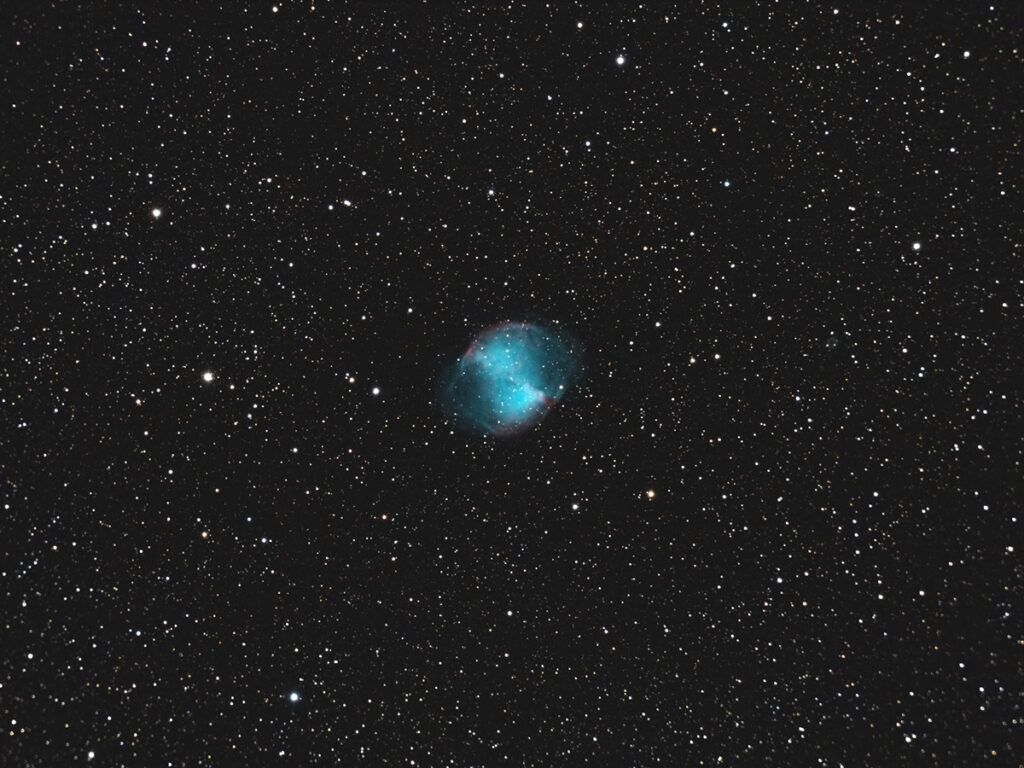
Telescope: Meade 10” LX850 ACF @ f/8, Orion Atlas EQ-G
Camera: Canon EOS Ra
Filter: GSO IR Blocking Filter
Guide scope: Astro-Tech 60mm, ASI120MM Mini, PHD2
Exposure: 24x120sec, ISO 800, saved as Raw
Darks: Internal (Long Exposure Noise Reduction On)
Flats: 32×1/50sec, Tee shirt flats taken at dusk
Average Light Pollution: Red zone, Bortle 8, fair transparency, light haze
Lensed Sky Quality Meter: 18.7
Stacking: Mean with a 1-sigma clip.
White Balance: Nebulosity Automatic
Software: Backyard EOS, Deep Sky Stacker, Nebulosity, Photoshop
M27, the Dumbbell nebula, is an expanding shell of gas that was ejected from a sun-like star as it exhausted its hydrogen fuel. Swollen into a red giant, the star shed its outer shell while its core collapsed into a white dwarf. Fierce UV radiation from the collapsed core sets the surrounds gas aglow with the blue/green light of doubly ionized oxygen. The diameter of the nebula is about 1 light-year with an estimated age of 9,800 years. Located between Sagitta and Cygnus, M27 is fairly easy to find with a small telescope. Visually, it shows two lobes connected by a neck of nebulosity, giving the nebula its characteristic dumbbell shape.
M27 is currently high in the east after sunset.
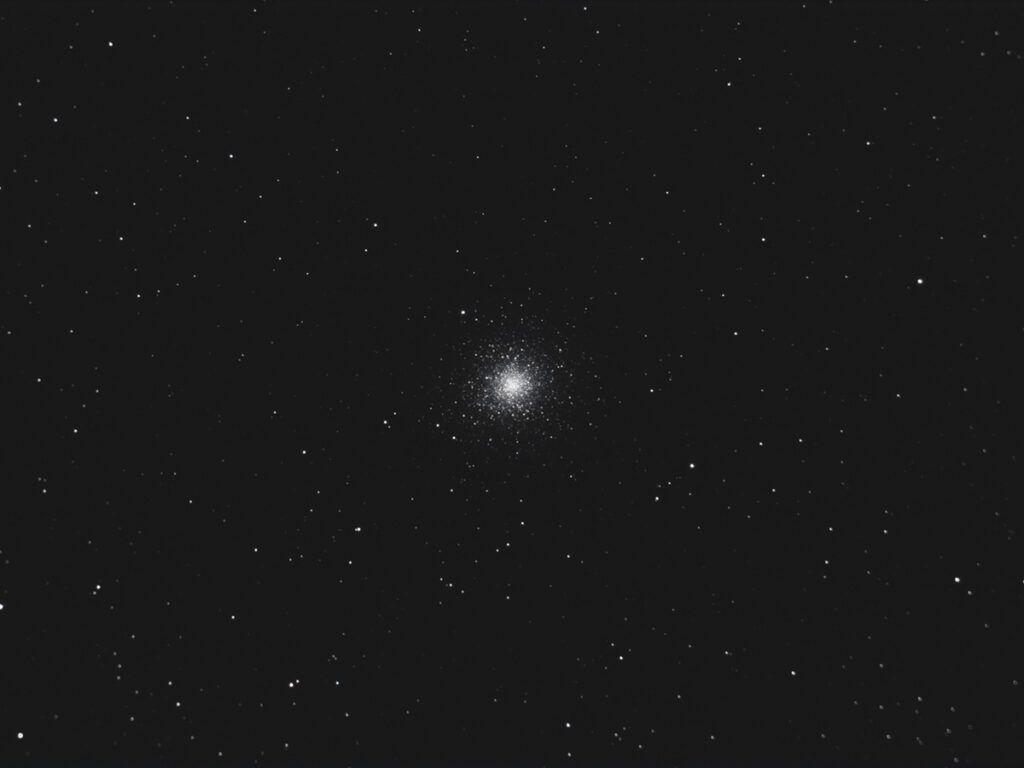
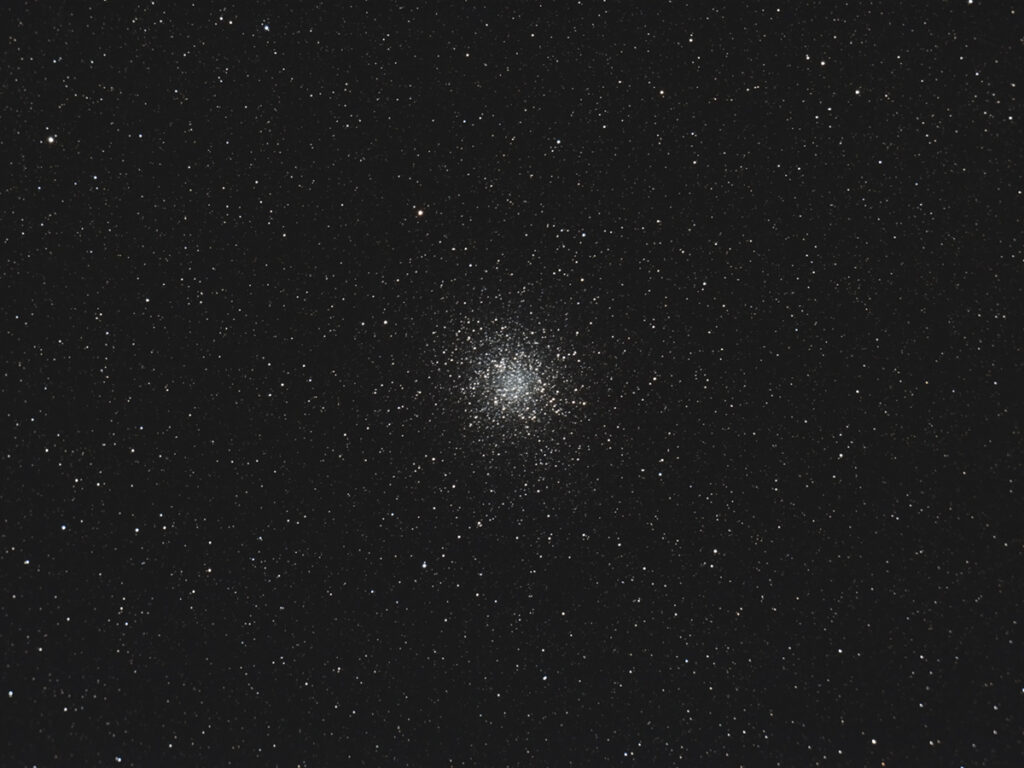
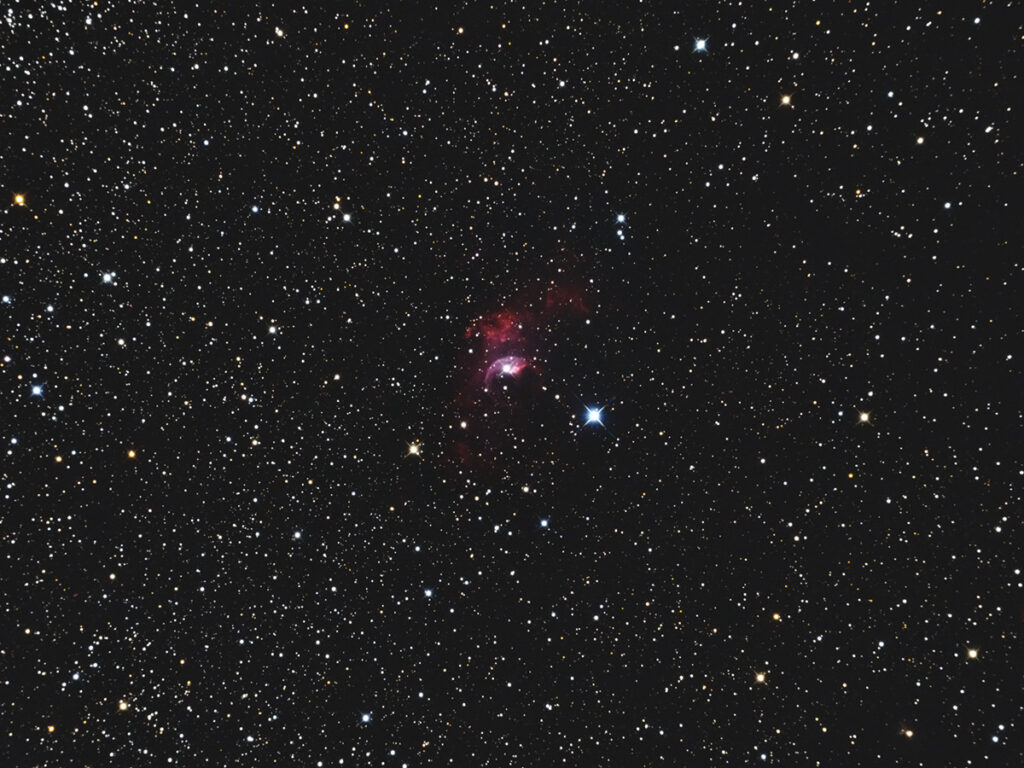
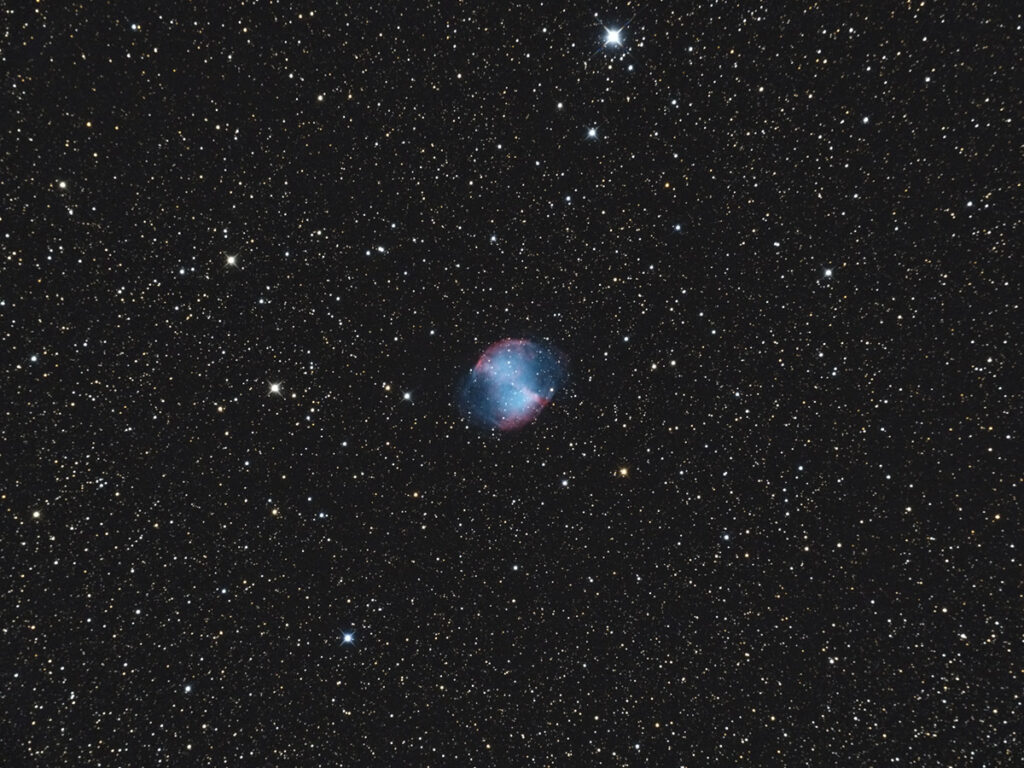
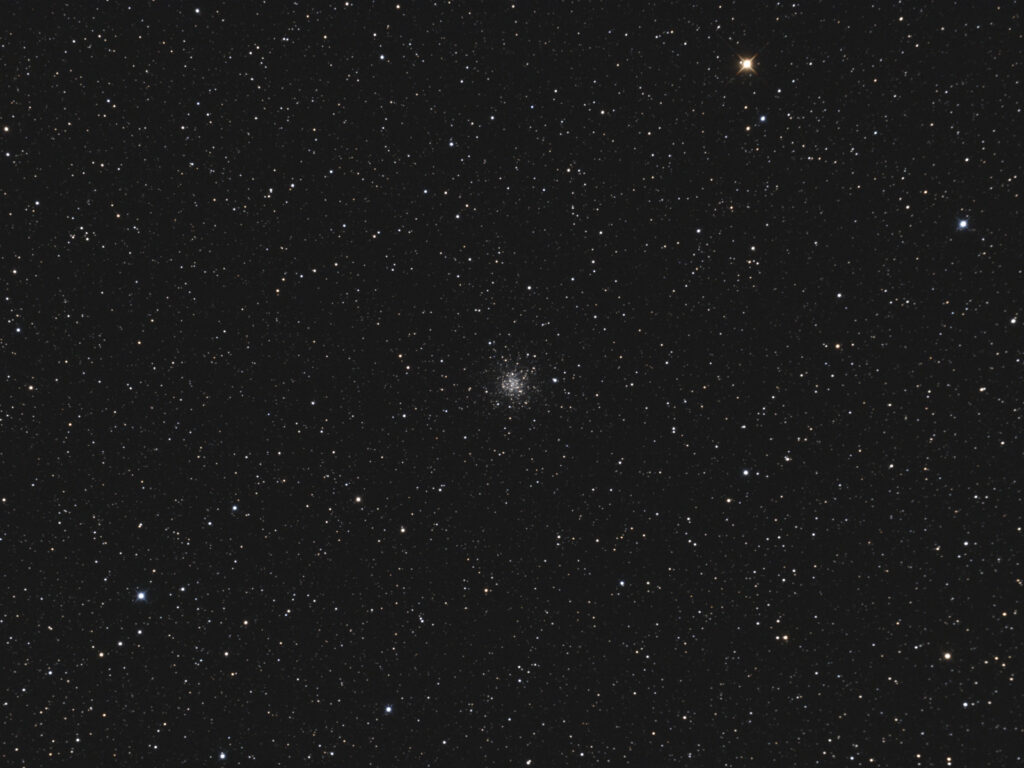
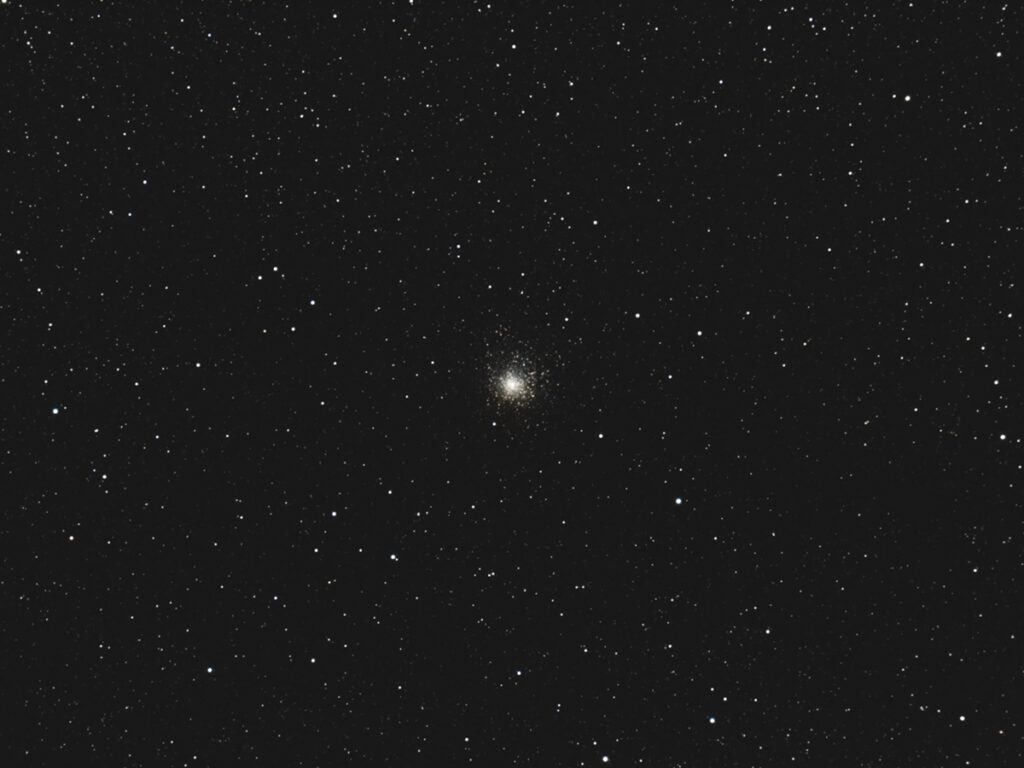
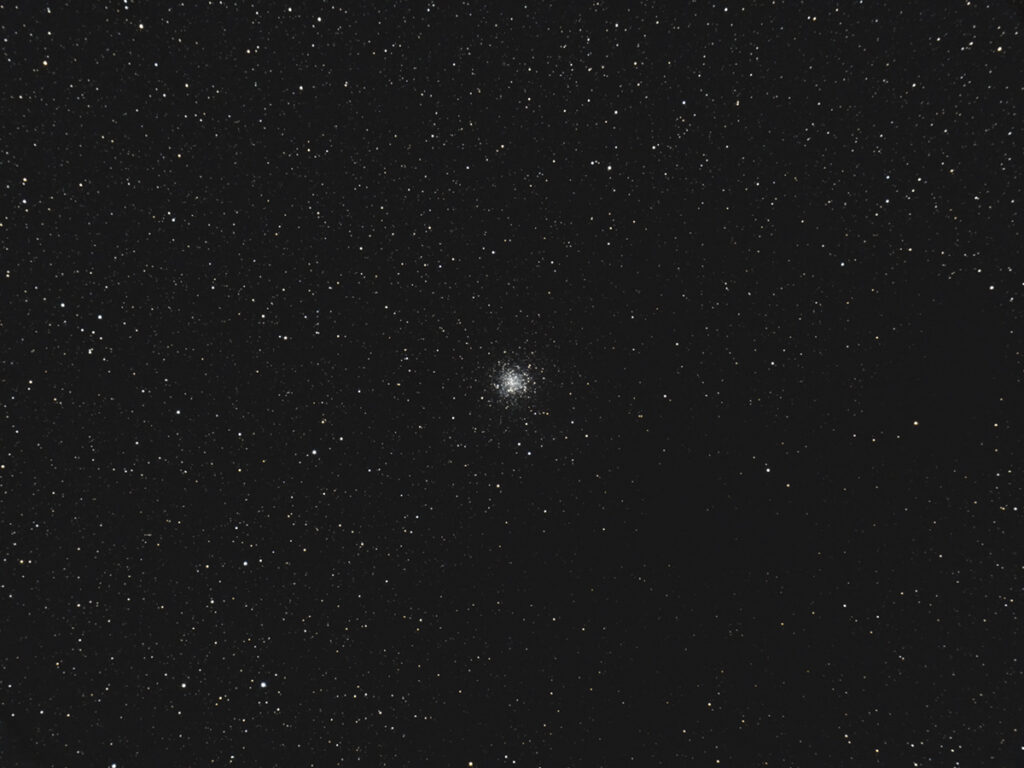
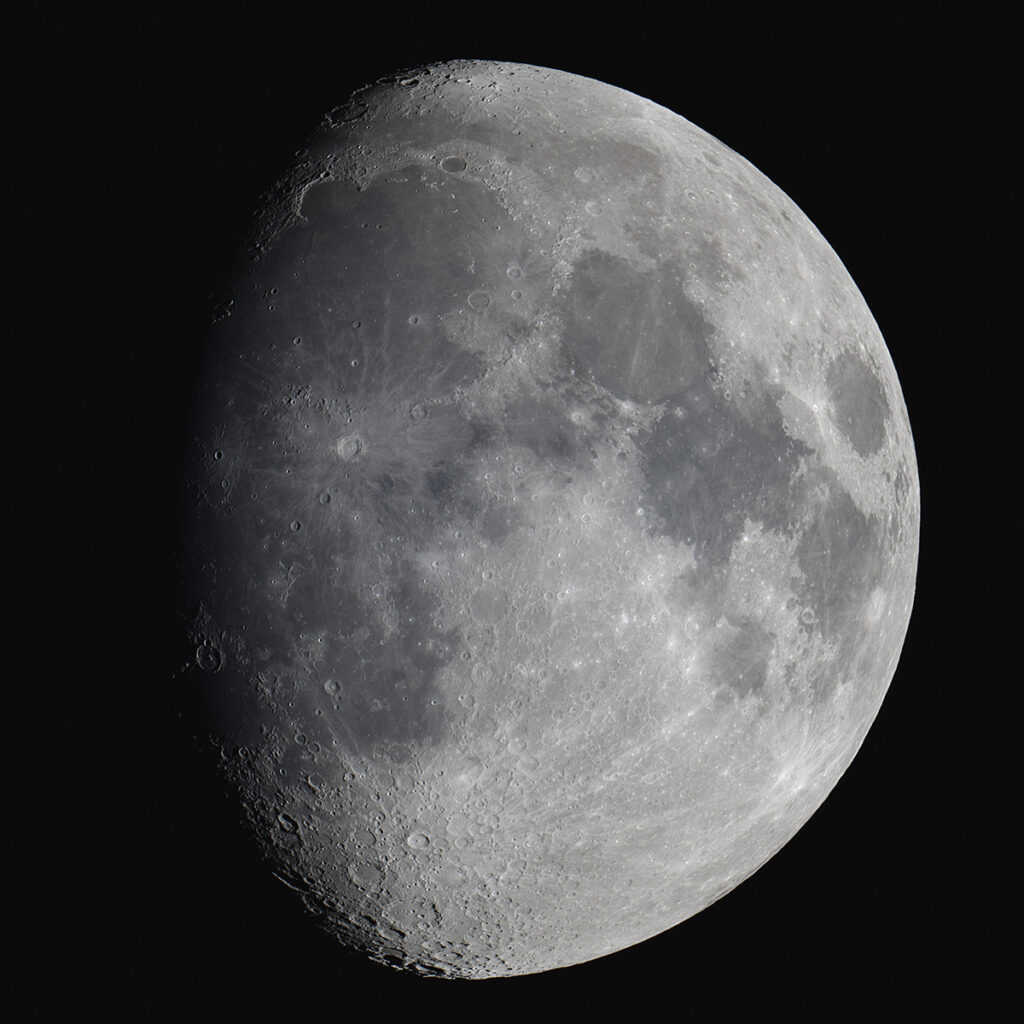
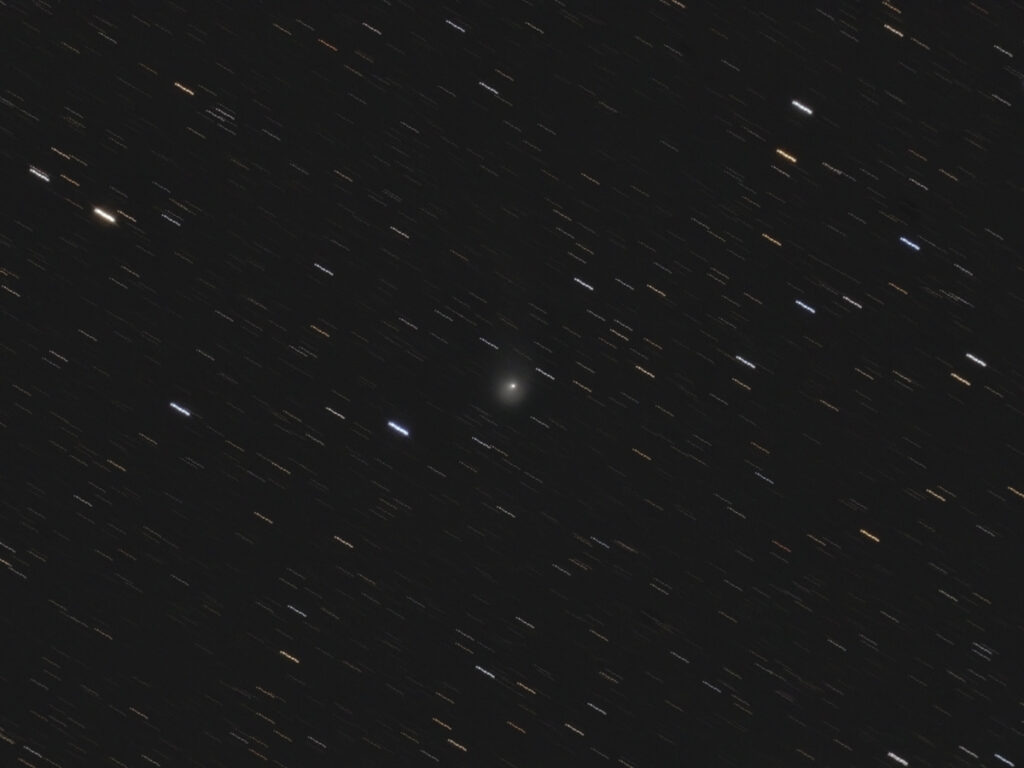
Recent Comments